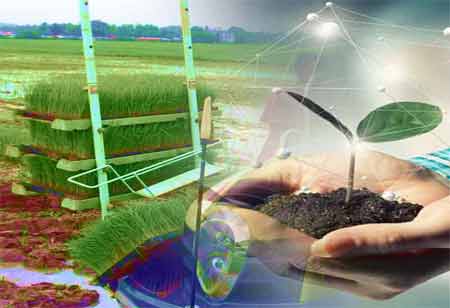THANK YOU FOR SUBSCRIBING
THANK YOU FOR SUBSCRIBING
Be first to read the latest tech news, Industry Leader's Insights, and CIO interviews of medium and large enterprises exclusively from Auto Tech Outlook

By
Auto Tech Outlook | Wednesday, May 08, 2024
Stay ahead of the industry with exclusive feature stories on the top companies, expert insights and the latest news delivered straight to your inbox. Subscribe today.
Japan is promoting hydrogen fuel cell vehicles (FCVs) to achieve carbon neutrality by 2050, with subsidies and hydrogen stations supported by major automakers like Toyota and Honda.
FREMONT, CA: Japan's pursuit of zero-emission transportation encompasses diverse avenues, with battery electric vehicles (BEVs) currently taking the lead. However, another contender, the hydrogen fuel cell vehicle (FCV), is gaining ground, especially in Japan.
Japan has positioned itself as a critical player in hydrogen technology on the global stage. The government is deeply committed to allocating significant funds to subsidize FCV purchases and construct hydrogen stations. This ambition is fueled by a goal of achieving carbon neutrality by 2050 and envisioning a hydrogen-powered society. Major Japanese automakers such as Toyota and Honda are in charge of actively developing and introducing commercial FCV models like the Mirai.
However, the path to FCV prominence faces significant obstacles. The primary challenge lies in the limited hydrogen refueling infrastructure. Unlike the extensive network of gas stations, hydrogen stations are sparse, creating a "chicken-and-egg" dilemma. Consumers are reluctant to embrace FCVs due to the scarcity of refueling options, which hampers station expansion. Moreover, the high cost of FCVs and their relatively limited driving range compared to BEVs pose substantial barriers.
Nevertheless, progress is evident. Technological advancements are driving down FCV costs and increasing their driving range. Research efforts are also underway to enhance the efficiency and sustainability of hydrogen production, addressing concerns about its current dependence on fossil fuels.
Significant distinctions emerge when comparing Battery Electric Vehicles (BEVs) and Fuel Cell Vehicles (FCVs). BEVs rely on large batteries with slower charging times, whereas FCVs utilize hydrogen gas stored in tanks, enabling faster refueling akin to traditional gas stations.
The swiftness of refueling is a notable advantage for FCVs, especially in sectors where downtime incurs significant costs, such as taxis, delivery fleets, and long-haul transportation. Conversely, BEVs excel in shorter commutes due to their lower cost and potentially extended range (dependent on battery capacity and driving conditions).
Examining the environmental footprint of each technology is essential. While FCVs emit no pollutants during operation, the hydrogen production process can pose challenges. Most hydrogen stems from natural gas steam reforming, releasing greenhouse gases. However, ongoing research into "green hydrogen" utilizing renewable energies like solar and wind power promises a cleaner fuel source for FCVs.
Japan's strategic focus extends beyond FCVs into a comprehensive hydrogen ecosystem. This entails infrastructure development for hydrogen stations and vehicle manufacturing and encompasses research into hydrogen production, storage, and logistics. Moreover, Japan explores diverse applications for hydrogen, including residential heating and powering commercial structures.
This integrated strategy addresses FCVs' challenges by fostering a robust hydrogen infrastructure that is adaptable to various sectors. Through such initiatives, Japan advocates convincingly for broader FCV adoption.
Japan's dedication to FCVs represents a bold investment in a cleaner transportation future. Despite existing challenges, technological progress and infrastructure development pave the way for broader acceptance. The success of FCVs hinges on overcoming cost barriers, expanding refueling infrastructure, and ensuring sustainable hydrogen production. Whether FCVs achieve mainstream status or remain a niche technology, their evolution pushes the boundaries of clean transportation and provides a valuable alternative in the journey toward sustainability.
 Copyright © 2025 AutoTech Outlook. All Rights Reserved | Privacy Policy | Subscribe | Sitemap | About us | Feedback Policy | Editorial Policy
Copyright © 2025 AutoTech Outlook. All Rights Reserved | Privacy Policy | Subscribe | Sitemap | About us | Feedback Policy | Editorial Policy 



